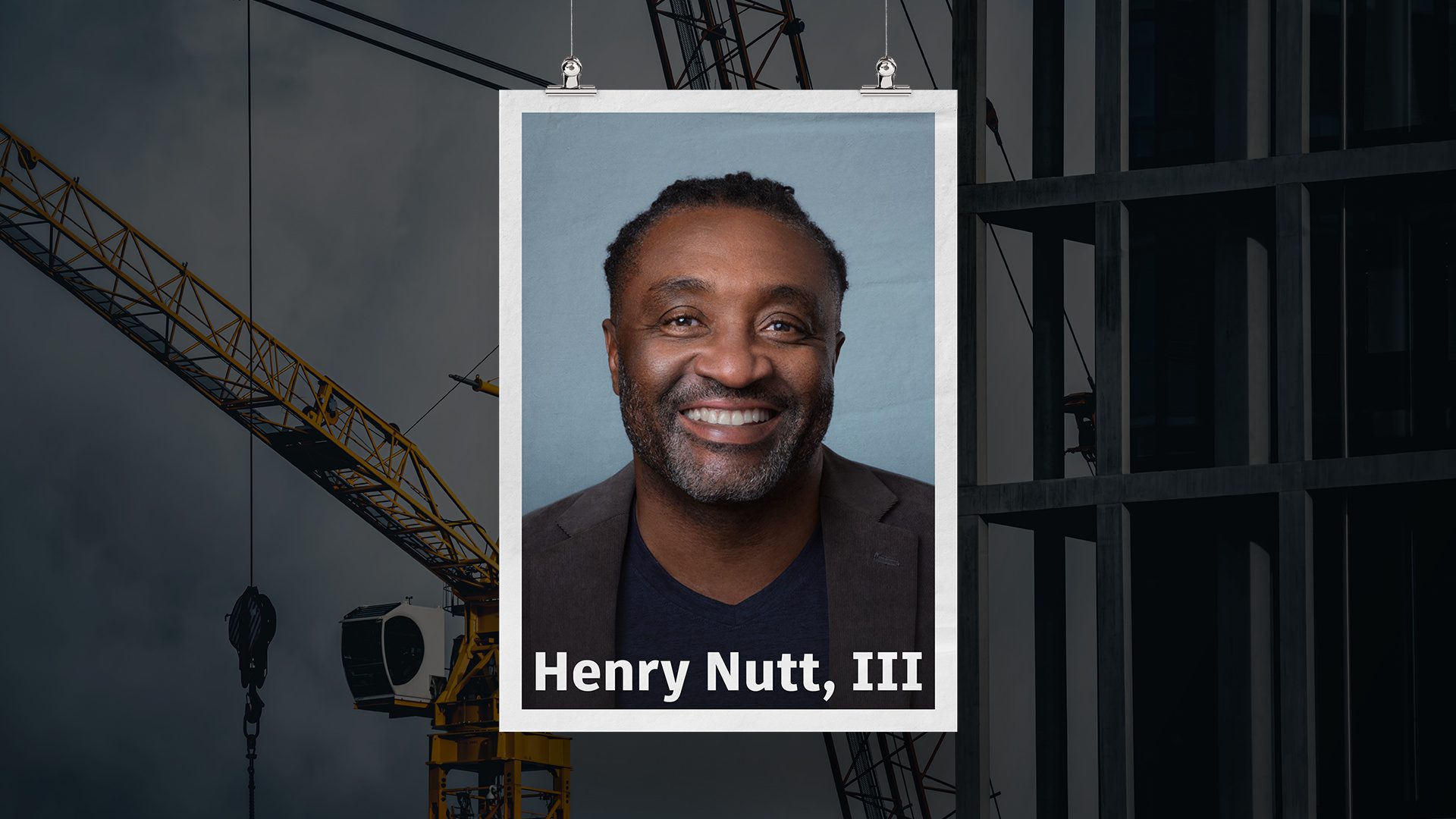
To overcome today’s construction companies’ challenges and complexities, we need powerful leaders to develop and implement the best possible approaches for business and project success. Henry Nutt III is one such leader, and one of our newest Digital Builder Insiders.
As a Preconstruction Executive at Southland Industries, Henry’s primary role is to develop business for the company and facilitate project success starting in preconstruction. Additionally, Henry advises owners and construction leaders on using lean tools to work more efficiently to reduce waste.
Beyond his company, Henry is also motivated to drive the entire industry forward. He sits on the Associated General Contractors of California’s Board of Directors and the Lean Construction Institute’s (LCI) Board of Directors as Chair. In 2023, Henry was awarded Chair of the Year after serving six years on the Associated General Contractors of America’s Diversity & Inclusion Council. He was also the 2018 recipient of the LCI’s Pioneer Award. In addition, he’s the author of Seven Principles: Creating Success in the Construction Industry.
Henry’s passion for lean practices and DEI principles shines through everything he does. That’s why we’re so excited to welcome him to our Insider team to write about workforce issues in the industry, lean construction principles, and digital transformation.
Get to know him better below.
I’ve been in the sheet metal trade since 1987 when I started as a pre-apprentice. I have been employed by Southland since May 2007, first as Sheet Metal General Superintendent for 12 years and now as a Preconstruction Executive for the last three and a half years. I have over 35 years of experience in the sheet metal trade through Local 104.
As a Precon Exec, my specific responsibility is business development and supporting projects during the preconstruction phase. My specialty is lean construction and building teams with a focus on DEI (diversity, equality, and inclusion).
My father, a retired sheet metal worker, is why I joined the trade. He encouraged me to take the test while I was attending community college back in 1986. Once I received notice that I passed the test, I had to move very quickly for what has become a long and successful career.
I am excited about the future and the amazing people who are making great strides to improve how work gets done in construction. We have a lot of hard work in front of us, but I am confident we will continue to make great progress.
When I consider the future of work, sustainability, and digital transformation, the common denominator is the people. It’s the people who perform the work and make a difference. I am passionate because I witness, almost daily, innovative minds coming together to transform the industry, and it gives me hope that the legacy left behind will set the tone for continuous improvement in all aspects of construction.
For me, it will always be about the people who truly make a difference, but two projects immediately come to mind when I consider building better or becoming inspired.
One is Van Ness Campus, aka Sutter Hospital in San Francisco. I spent about seven years, including preconstruction, on that project. It was a full IFOA delivery that allowed and promoted an innovative approach at all levels, including how we communicated, solved problems, and executed the work. At the time, the delivery method was like nothing I had done in my 25 years. It truly inspired me to reach higher heights and dig deeper concerning innovation, considering what was possible and flawlessly executing.
The other project was Google Bay View in Sunnyvale. It resulted from a great team of people who all wanted one thing: a successful project for the owner. The behaviors and decisions to place the team first are what made that project successful.
Readers can expect to be challenged, inspired, and hopefully motivated to consider what is possible. I have learned (from many of my own failures) to celebrate the losses that have provided lessons for me.
For so many of us, we get caught in the forest and only see the trees in front of us. We forget that we’re in a magnificent forest full of opportunity. Failure will often help us start fresh and revisit things we have seen before, yet with a new mindset. Readers will recognize that I am not a status quo thinker or a box checker. I am here to make an impact and stir the pot a bit, with grace and respect.
Any instrument, apparatus, or gadget that allows me to share an idea, thought, or concept is one tool I cannot live without. That primary tool is my voice. Whether I transmit it through the phone, a written letter, an email, sign language, or my actions, it’s a form of communication.
That’s how I believe we affect change. Whether with a loud voice on top of a mountain, or that small still voice whispering the truth, it all has significance.

May we collect and use your data?
Learn more about the Third Party Services we use and our Privacy Statement.May we collect and use your data to tailor your experience?
Explore the benefits of a customized experience by managing your privacy settings for this site or visit our Privacy Statement to learn more about your options.